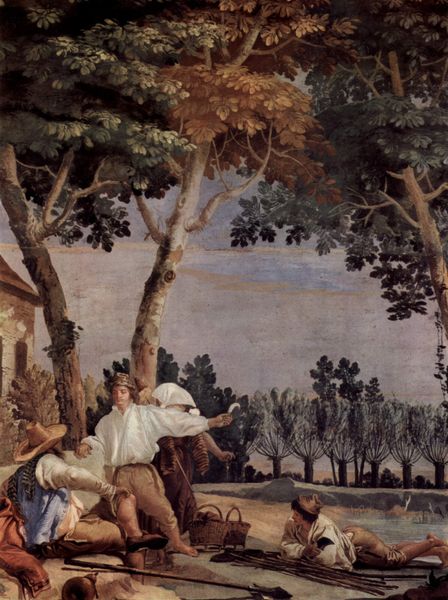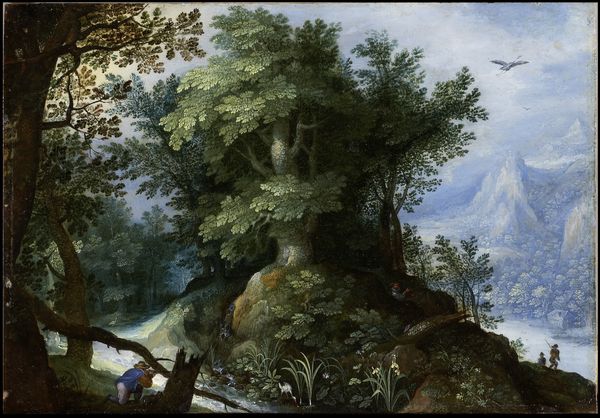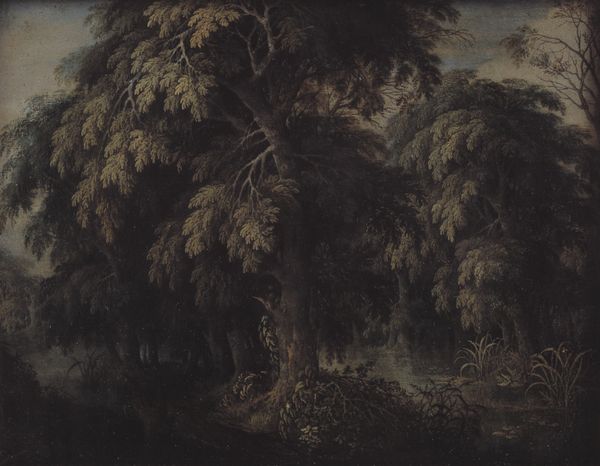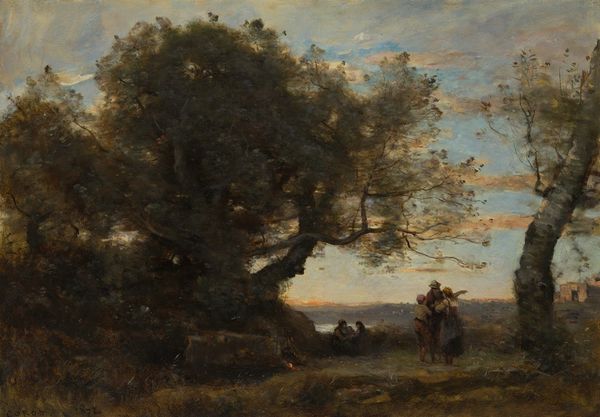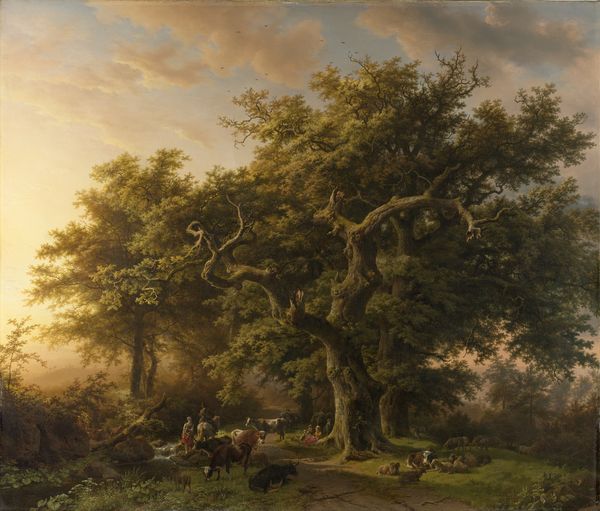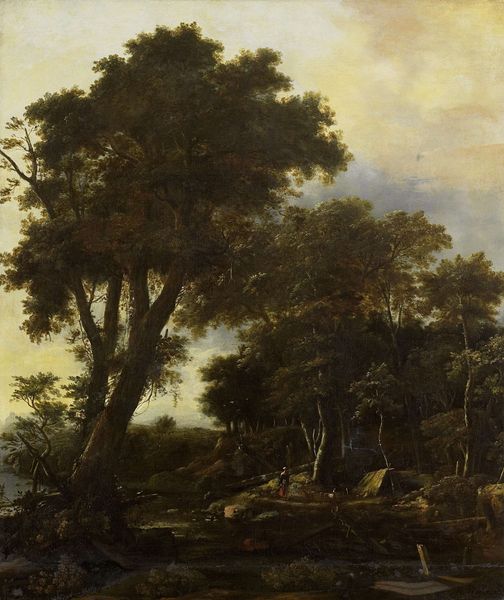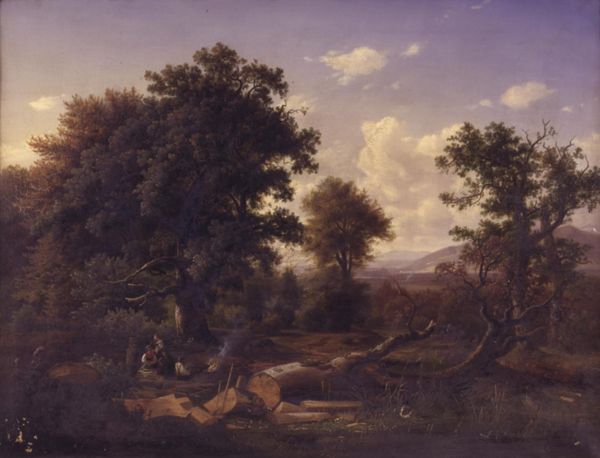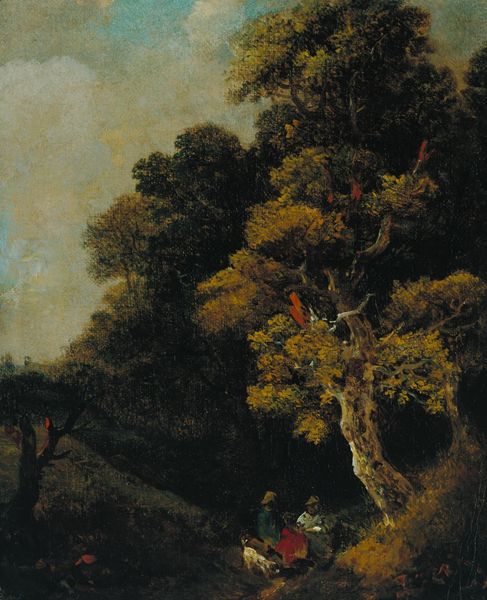
King Charles II and Colonel William Carlos in the Royal Oak 1669
0:00
0:00
isaacfuller
National Portrait Gallery, London, UK
painting, oil-paint
#
baroque
#
painting
#
oil-paint
#
landscape
#
figuration
#
oil painting
#
genre-painting
Copyright: Public domain
Editor: This is "King Charles II and Colonel William Carlos in the Royal Oak," painted in 1669 by Isaac Fuller. The texture looks very smooth due to the oil paint, and the Baroque style infuses it with a certain dramatic quality. What strikes you most about its composition? Curator: Observe how Fuller deploys chiaroscuro—the stark contrast between light and dark—to sculpt the forms within the composition. The figures, nestled within the oak's canopy, are illuminated against a tenebrous background, which amplifies their presence. Note too how the gnarled branches create lines and movement within the frame, does it offer a kind of visual architecture, wouldn’t you agree? Editor: Yes, definitely. The darkness surrounding them almost isolates the figures in the tree, giving it more significance in the landscape. Curator: Precisely. Now consider the treatment of the foliage itself. Each leaf and branch is meticulously rendered, yet the overall effect is one of dense, almost claustrophobic enclosure. Is this deliberate naturalism, or perhaps something more symbolic? Consider the artist's approach to capturing textures. How might his emphasis on these surfaces contribute to the work's overall impact and its themes? Editor: I guess that meticulous attention draws us closer, emphasizing their precarious situation, as if every leaf could reveal their hiding place. Curator: It's in those visual structures that we find meaning. Fuller uses visual tools like shadow and depth, leading us to find emotional narrative in a dramatic, historical moment. How insightful of you to observe that crucial point about Fuller’s technique creating additional layers! Editor: Thank you. Seeing the dramatic shadows and the carefully created foliage through a more formal lens gives me a new way to consider historical paintings.
Comments
No comments
Be the first to comment and join the conversation on the ultimate creative platform.
